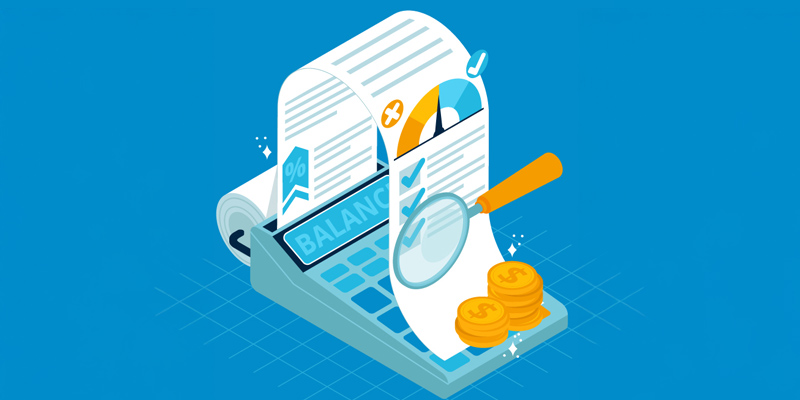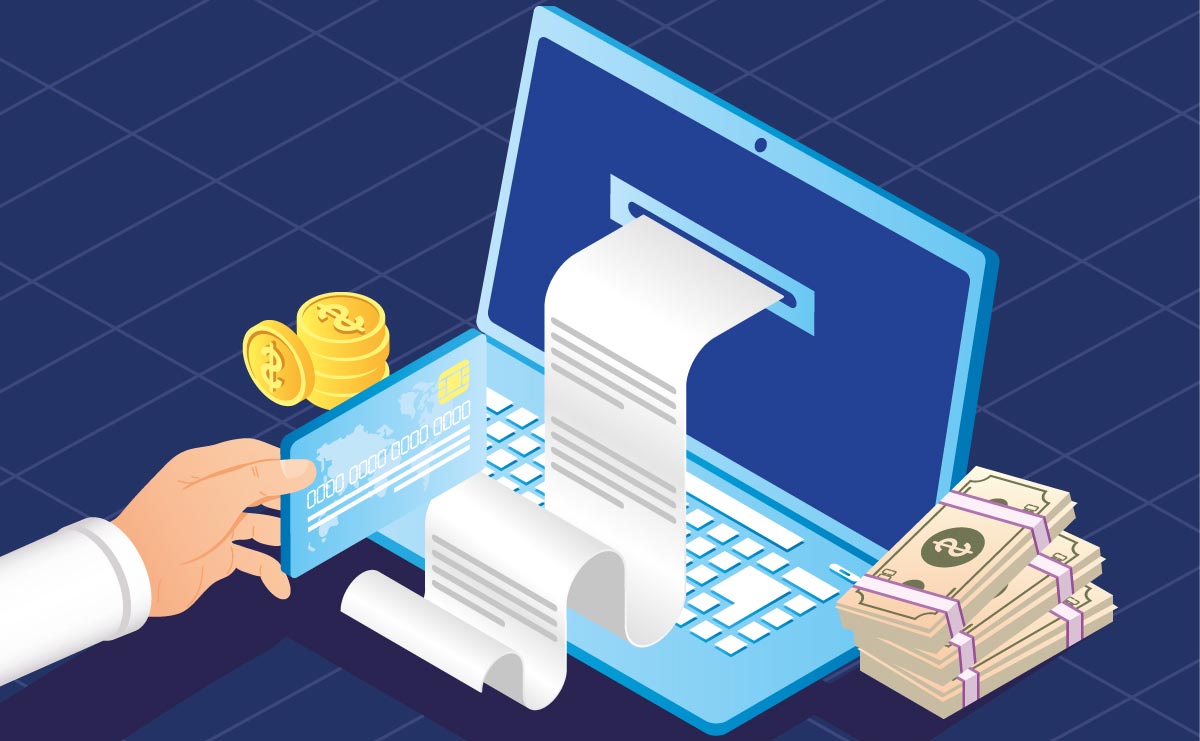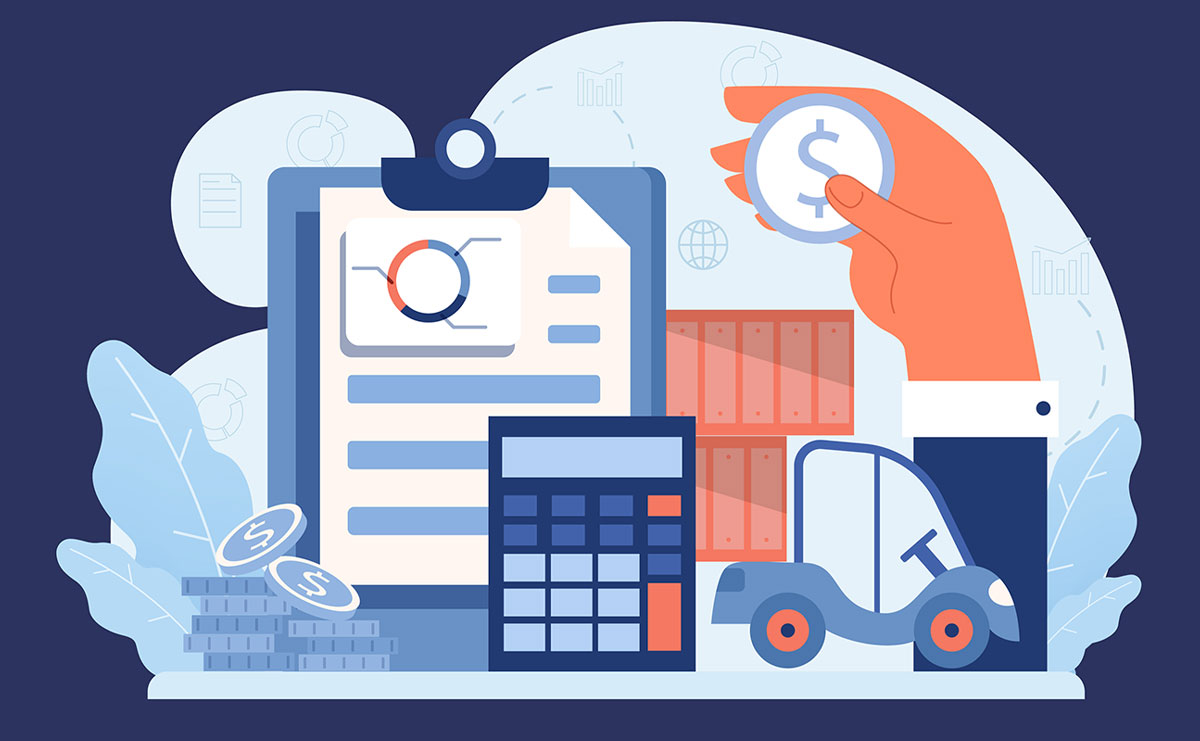Contents
The Ultimate Cheat Sheet for Attorney Billing and Invoicing
Law firms need to take care of their billing system as it plays a crucial role in their ecosystem. A clear law firm billing would strengthen the trust among the clients to exactly know for what they are charged with payments. Attorney billing cheat sheet provided below will dive into the methods of billing and providing sample billing language for attorneys.
Why Proper Law Firm Billing is Critical
Accurate billing is essential for law firms to operate efficiently, maintain client trust, and ensure fair compensation for services rendered. Proper billing practices go beyond just tracking hours—they reflect professionalism and commitment to ethical standards in legal practice. Understanding the importance of law firm billing is the first step toward achieving financial stability and fostering stronger attorney-client relationships.
I. What Makes Accurate Billing Essential?
Accurate billing allows law firms to capture every billable moment while ensuring clients are charged fairly for the work performed. Missteps in billing, such as overlooking hours or miscalculating fees, can lead to revenue loss or strained client relationships. Clear and precise attorney billing practices protect the firm from potential disputes, providing transparency in all financial dealings.
II. Common Billing Challenges for Attorneys
Attorneys face various challenges when it comes to billing. One of the most common issues is the time-consuming nature of manually tracking billable hours. This can lead to underbilling, overbilling, or lost revenue from unrecorded tasks. Additionally, crafting clear and effective sample billing language for attorneys can be a hurdle, especially for firms with diverse clients and case types. Finally, ensuring compliance with client expectations and industry standards adds another layer of complexity.

III. The Role of Transparency in Attorney-Client Relationships
Transparency in billing is vital for building trust between attorneys and their clients. An attorney billing cheat sheet can be an invaluable resource in ensuring clear communication about fees, billing methods, and payment expectations. Clients who understand their invoices are less likely to dispute charges, leading to a more harmonious relationship. Transparent billing practices demonstrate the firm’s commitment to professionalism and ethical standards.
By addressing these key aspects of law firm billing, attorneys can create an efficient and trustworthy system, setting the stage for long-term success.
Mastering Hourly Billing for Attorneys
Hourly billing remains a cornerstone of many law firm billing strategies, offering flexibility and accuracy in cases with unpredictable outcomes. Attorneys adopting this method must focus on detailed time tracking, transparent communication, and fair rates to ensure a positive experience for their clients and the firm. Below are essential aspects of mastering hourly billing and its role in the attorney billing landscape.
I. When Hourly Billing is the Best Fit
Hourly billing is most appropriate for legal matters where the scope of work is uncertain or likely to evolve. For example, litigation cases often involve extensive research, court appearances, and unpredictable developments, making it challenging to estimate costs upfront. This billing model ensures that clients are charged relatively based on the time spent, and attorneys are compensated accurately for their efforts.
Effective law firm billing systems for hourly rates should also include mechanisms to capture every task performed. This ensures that time is accounted for, safeguarding the firm’s revenue while maintaining client trust.
II. Sample Billing Language for Hourly Rate Agreements
Clear and concise billing language is critical to setting expectations with clients. A strong agreement should outline the hourly rate, the types of tasks billed (e.g., research, drafting, court appearances), and how time is tracked. Below is an example of sample billing language for attorneys using the hourly method:
“Our services are billed at an hourly rate of $X per hour. Time is recorded in 6-minute increments and includes work performed on research, correspondence, court preparation, and other case-related activities. Detailed invoices will be provided monthly, reflecting all billable hours and associated tasks.”
Incorporating clear terms like these into client agreements ensures transparency and minimizes the risk of disputes.
III. Practice Areas Suited for Hourly Billing
Hourly billing is particularly well-suited for practice areas where unpredictability is inherent. These include:
- Litigation: Complex legal disputes requiring significant research, filing, and court representation.
- Family Law: Divorce or custody cases where negotiations and hearings can vary in length.
- Corporate Law: Ongoing legal counsel for businesses that need frequent and varied services.
- Civil Litigation: Cases where unexpected developments can require additional time and attention.
By applying hourly billing to these areas, attorneys can ensure their compensation aligns with the scope and complexity of their work.
IV. Time-Tracking Tips for Hourly Billing
Accurate time tracking is essential for effective hourly billing. Attorneys can leverage legal practice management tools designed to capture every billable minute automatically. These systems eliminate the risk of human error, ensuring the firm’s revenue reflects the true effort put into each case. Additionally, they simplify the attorney billing process by integrating time-tracking data directly into invoicing systems.
Mastering hourly billing requires precise tracking, clear communication, and client-focused practices. By incorporating tools like an attorney billing cheat sheet, firms can create a structured and transparent approach to hourly billing that benefits clients and attorneys.
Fixed-Rate Billing: A Predictable Alternative
Fixed-rate billing, also known as flat-fee billing, is a straightforward approach for legal services with a defined scope. This method provides predictability for the attorney and the client, making it an increasingly popular option in various practice areas. Implementing fixed-rate billing requires thoughtful planning, clear communication, and a strategic understanding of law firm billing practices.
I. Understanding Flat Fee Agreements
Flat-fee billing charges a set amount for a specific legal service, regardless of the time spent on the task. This approach simplifies attorney billing, as clients know the cost upfront, eliminating surprises. Attorneys benefit from streamlined invoicing and consistent cash flow. Fixed-rate billing is ideal for repetitive and predictable services, such as drafting contracts, preparing wills, or filing trademarks.
A well-crafted attorney billing cheat sheet can help attorneys determine when to use flat fees effectively, ensuring the approach aligns with client needs and firm goals.
II. Practice Areas Ideal for Fixed-Rate Billing
Due to their defined nature, certain legal practice areas naturally lend themselves to fixed-rate billing. These include:
- Estate Planning: Drafting wills, trusts, and powers of attorney.
- Bankruptcy Law: Preparing and filing bankruptcy petitions.
- Real Estate Transactions: Managing property purchases, sales, or lease agreements.
- Trademark Law: Filing for trademarks and responding to office actions.
By using fixed fees in these areas, firms can simplify the client experience while maintaining a predictable revenue stream.
III. Sample Billing Language for Fixed Fees
Clear billing language is critical for setting expectations and avoiding misunderstandings. Below is an example of sample billing language for attorneys offering fixed-fee services:
“The legal service provided is billed at a flat fee of $X. This fee includes all work related to [specific service, e.g., drafting a last will] but excludes additional services such as [list of excluded services, e.g., court filings or litigation]. The flat fee will be billed upon engagement and must be paid before service commencement.”
This type of language ensures that clients understand the scope of the service and what the fee includes, minimizing potential disputes.
IV. Setting Fees Based on Data and Historical Reporting
Determining an appropriate fixed fee requires accurate data and a deep understanding of past cases. Historical reporting on time spent and resources used for similar matters helps firms set prices that are both fair to clients and profitable for the firm. Legal practice management software can play a vital role here, providing insights into the firm’s operations and simplifying the fee calculation process.
Fixed-rate billing in law firm billing strategies offers transparency, simplicity, and predictability. This approach can enhance client satisfaction and boost firm profitability when combined with well-documented processes, clear communication, and tools like an attorney billing cheat sheet.
Using Contingency Billing for Results-Oriented Payment
Contingency billing offers a unique payment structure where attorneys are compensated based on the successful outcome of a case. This model aligns the attorney’s incentives with the client’s goals, making it a popular option for specific types of legal work. However, contingency billing requires careful planning, a clear understanding of law firm billing practices, and strong agreements to ensure transparency.
I. How Contingency Billing Works
In contingency billing, attorneys do not charge upfront fees. Instead, they receive a predetermined percentage of the client’s recovery, typically in personal injury, employment law, or workers’ compensation cases. This approach allows clients who may need more than hourly rates to access legal representation. While the attorney assumes some financial risk, a favorable outcome ensures compensation that reflects the effort and expertise invested in the case.
Precise tracking of expenses and time is still crucial in contingency billing, as it ensures accurate records in case of fee disputes or audits. An attorney billing cheat sheet can be invaluable for managing these details effectively.
II. Practice Areas for Contingency Billing
Contingency billing is best suited for cases where the client seeks monetary damages and the outcome is uncertain. Personal injury cases, such as car accidents or medical malpractice, are typical examples. Employment law cases involving wrongful termination or discrimination claims also frequently use this model. Attorneys in these areas often rely on contingency billing because it aligns their financial interests with the success of the client’s claim.
Carefully selecting cases with a high likelihood of success is a critical element of this approach, as it minimizes the firm’s financial risk while ensuring fair compensation for legal services.
III. Balancing Risk and Reward in Contingency Cases
While contingency billing can be highly rewarding, it comes with inherent risks. Attorneys must weigh the potential payout against the likelihood of a favorable outcome. Rigorous case evaluation and understanding past success rates are essential in making informed decisions. Legal practice management tools can aid attorneys by providing data-driven insights into case histories, enabling better risk assessment.
A robust framework for contingency billing within the firm’s overall law firm billing strategy can also mitigate potential challenges. For instance, maintaining financial reserves for ongoing cases ensures the firm’s operational stability while waiting for case resolutions.
IV. Sample Billing Language for Contingency Agreements
Precise and transparent billing language is essential for contingency fee arrangements. Below is an example of sample billing language for attorneys using this model:
“Our legal representation is provided on a contingency fee basis. No fees will be charged unless a recovery is obtained on your behalf. Upon recovery, a fee of [percentage] of the total settlement or judgment will be due, along with any case-related expenses incurred during representation. These expenses will be itemized and detailed in your invoice.”
This language ensures that clients fully understand the terms of the agreement, reducing the risk of disputes.
By strategically incorporating contingency billing, firms can provide accessible legal services while aligning their financial interests with client success. When managed effectively, this approach becomes a powerful addition to any law firm’s billing system, fostering profitability and client satisfaction.
Sample Billing Language for Attorneys Across Different Methods
Clear and consistent language is essential for law firms to ensure transparency and trust with clients. Whether billing by the hour, a flat fee, or on a contingency basis, crafting precise and professional agreements helps avoid misunderstandings and fosters long-term client relationships. Incorporating thoughtfully designed billing terms into your attorney’s billing processes is key to maintaining compliance and clarity in all transactions.
I. Hourly Billing Language Examples
Hourly billing requires detailed language to communicate how time is tracked and charged. An explicit agreement ensures that clients understand the billing structure and what services are included. For example:
“Our services will be billed at $X per hour. Time is recorded in 6-minute increments and includes all work on case-related activities such as legal research, drafting documents, and court appearances. Invoices will be issued monthly, providing a detailed breakdown of hours worked and the associated costs.”
This level of detail ensures that clients are aware of what they are being billed for, reducing the likelihood of disputes.
II. Fixed Fee Billing Language Examples
For flat fee billing, clear terms are essential to define the scope of work and set client expectations. A well-drafted agreement might state:
“The service provided will be billed at a flat fee of $X, which covers all work related to [specific legal service, e.g., drafting a contract]. This fee only includes additional services, such as litigation or other unanticipated tasks outside the agreed scope. The flat fee must be paid in full before service commencement.”
Such language clarifies what the fee includes and excludes, ensuring transparency and avoiding ambiguity.
III. Contingency Billing Language Examples
Contingency billing requires explicit language to outline the fee structure and potential additional costs. Below is an example:
“Our representation in this matter is based on a contingency fee arrangement. No legal fees will be charged unless a recovery is obtained. Upon recovery, a fee of [percentage] of the total amount will be due. In addition to the contingency fee, any case-related expenses incurred, such as filing fees or expert witness costs, will be billed separately and itemized on your final invoice.”
This language ensures that clients understand the fee structure and their financial obligations should the case result in a favorable outcome.
IV. Best Practices for Crafting Billing Language
Regardless of the billing method, there are several best practices when drafting billing language. Use plain language to ensure clients can easily understand the terms. Clearly outline the scope of work and any exclusions to avoid confusion. Align your billing terms with your law firm billing policy to maintain consistency across all client agreements. Leveraging resources like an attorney billing cheat sheet can help streamline this process and ensure all necessary details are covered.
By implementing sample billing language for attorneys tailored to each billing method, firms can enhance client communication and uphold professional standards. Clear agreements are the foundation of effective attorney billing, promoting trust and transparency in every client interaction.
Streamlining Billing Efficiency in Your Law Firm
Efficient billing practices are essential for maintaining a law firm’s financial health and client satisfaction. By optimizing how time and services are tracked, invoiced, and managed, attorneys can focus on delivering quality legal work without being bogged down by administrative burdens. Streamlined processes reduce errors, improve cash flow, and enhance client trust in your law firm’s billing practices.
I. Automated Time Tracking: A Game-Changer
Manual time tracking can be time-consuming and prone to errors, resulting in lost revenue or disputes. Implementing automated tools simplifies the attorney billing process by accurately capturing every billable moment. Time-tracking software integrates directly with billing systems, reducing the time spent on administrative tasks and ensuring that no services are overlooked. Using such tools is a practical step outlined in any effective attorney billing cheat sheet, as it ensures precision in recording billable hours.
II. Regular Performance Monitoring
Monitoring firm performance is crucial for identifying inefficiencies and improving billing practices. Regular reviews of billing data can reveal patterns such as unbilled hours or delays in invoicing. Attorneys can use this information to adjust their processes, ensuring maximum profitability and client satisfaction. Legal practice management tools offer insights into billing metrics, enabling firms to align their strategies with industry standards.
Incorporating sample billing language for attorneys into these systems ensures consistency across all client interactions, further streamlining the process.
III. Consistency in Invoicing
Timely and consistent invoicing is key to maintaining cash flow and reducing client confusion. Establishing a regular billing schedule, such as monthly or bi-weekly invoicing, helps clients anticipate and prepare for payments. Automated invoicing systems ensure that bills are sent on time and complete with itemized descriptions of services rendered. This level of organization reflects a professional approach to law firm billing and minimizes payment delays.
Clear and consistent communication about fees and invoicing processes is essential. Well-structured billing terms, such as those in an attorney billing cheat sheet, can guide firms in creating standardized and compelling invoices.
IV. Enhancing Client Communication Through Billing
Transparent and open communication is vital for building trust with clients. Clarifying billing practices, such as detailing hourly rates, flat fees, or contingency arrangements, helps clients understand their financial obligations. Regular updates on case progress and associated costs ensure everything is predictable when the invoice arrives. This strengthens the attorney-client relationship and aligns the billing process with ethical standards.
Law firms can optimize their attorney billing systems by adopting streamlined practices and leveraging technology. These improvements enhance operational efficiency and promote transparency, professionalism, and client satisfaction. A well-organized approach to billing ensures that attorneys can focus on their core responsibilities while maintaining a financially stable and prosperous practice.
Leveraging Legal Practice Management Software to Simplify Attorney Billing
Legal practice management software like RunSensible has revolutionized how law firms handle billing, offering tools to streamline processes, improving accuracy, and enhancing client satisfaction. For firms striving to refine their billing practices, adopting comprehensive software solutions can address common challenges while boosting efficiency. These tools simplify attorney billing by automating complex tasks and providing valuable insights into firm operations.
I. What to Look for in Billing Software
Selecting the right software begins with identifying features that align with your firm’s billing needs. An ideal solution should support multiple billing methods, including hourly, flat fee, and contingency arrangements. It should also integrate seamlessly with time-tracking tools, invoice generation, and payment systems. For law firm billing to be genuinely effective, software must allow for invoice customization, including specific terms like sample billing language for attorneys.
Robust reporting capabilities are another critical feature, providing data-driven insights to refine billing strategies and ensure the firm remains profitable.
II. How Software Can Improve Accuracy and Save Time
Manual billing processes are prone to errors, from missed billable hours to miscalculated fees. Legal practice management software eliminates these issues by automating time tracking, invoice generation, and payment processing. Automated tools such as RunSensible ensure every billable moment is captured and correctly categorized, reducing disputes and enhancing client trust. These efficiencies allow attorneys time to focus on their core responsibilities while ensuring that the firm’s attorney billing is accurate and reliable.
An attorney billing cheat sheet is a helpful supplement to such software, guiding staff on configuring and utilizing the system effectively.
III. Replacing Manual Systems with Automated Solutions
Transitioning from manual to automated systems is a transformative step for law firms. Automated solutions reduce administrative overhead and promptly send invoices with accurate, itemized details. This shift saves time and minimizes the risk of human error. Firms can customize templates with sample billing language for attorneys, ensuring client agreements and invoices remain professional and consistent.
By eliminating the inefficiencies of manual processes, firms can achieve greater productivity and profitability while offering better experience for their clients.
IV. Boosting Law Firm Profitability Through Technology
Implementing legal practice management software like RunSensible streamlines processes and directly impacts a firm’s bottom line. Automated billing systems ensure that all billable hours are accounted for, preventing revenue loss. Tools that track case expenses and performance metrics also help firms optimize their pricing strategies. This approach transforms law firm billing into a strategic advantage, improving cash flow and client satisfaction.
Integrating technology into billing practices allows firms to operate more efficiently and professionally. With the right tools and a structured approach, attorneys can refine their billing processes, reduce administrative burdens, and strengthen client relationships.
By leveraging technology, law firms can transform attorney billing from a time-consuming chore into a seamless and strategic operation. Legal practice management software provides the foundation for improved accuracy, transparency, and profitability, ensuring the firm’s long-term success.
Streamlining Attorney Billing for Success
Effective billing practices are the backbone of a thriving legal practice. Whether using hourly, flat-fee, or contingency billing models, clarity, transparency, and efficiency are paramount. By implementing the strategies outlined in this attorney billing cheat sheet, law firms can overcome common challenges, enhance client trust, and ensure fair compensation for their work. Incorporating tools like sample billing language for attorneys and legal practice management software further simplifies processes, making it easier to manage complex cases while maintaining professional standards.
Optimizing law firm billing is not just about streamlining administrative tasks; it is about fostering better attorney-client relationships and setting a solid foundation for financial stability. A thoughtful approach to attorney billing ensures that every hour, service, and expense is accurately accounted for, aligning the firm’s goals with its clients’ expectations. With clear communication and efficient tools, law firms can focus on delivering exceptional legal services while securing long-term growth.
Take Control of Your Firm’s Billing with RunSensible
Simplify your billing process and maximize profitability with RunSensible’s all-in-one legal practice management software. Designed specifically for law firms, RunSensible offers powerful features like automated time tracking, customizable invoices with sample billing language for attorneys, and seamless integration of multiple billing methods—hourly, flat-fee, and contingency. With robust reporting tools, you can monitor performance, optimize pricing, and ensure no billable hour is left untracked. Transform your attorney billing into a streamlined, efficient, and client-friendly operation with RunSensible today.
FAQs
1. What do law firms use the most common billing methods?
Law firms typically use three main billing methods: hourly, flat fee, and contingency. Hourly billing charges clients based on the time spent on their case, while flat-fee billing offers a predetermined cost for specific services. Contingency billing, often used in personal injury or employment law cases, bases payment on a percentage of the recovery achieved.
2. How can law firms ensure accurate billing for their services?
Accurate billing starts with clear agreements and precise time tracking. Tools like automated time trackers and legal practice management software ensure that all billable hours are captured and categorized. Using sample billing language for attorneys in contracts and invoices also helps set clear expectations and avoids client disputes.
3. Why is transparency important in attorney billing?
Transparency in billing fosters trust and prevents misunderstandings between attorneys and clients. When clients understand how they are being charged—whether through itemized invoices, clear agreements, or consistent communication—they are more likely to pay on time and feel satisfied with their services.
4. How does legal practice management software improve law firm billing?
Legal practice management software like RunSensible automates critical billing tasks, including time tracking, invoice generation, and payment processing. These tools reduce errors, save time, and allow firms to customize invoices with features like sample billing language for attorneys. By streamlining processes, firms can enhance efficiency and profitability.
Disclaimer: The content provided on this blog is for informational purposes only and does not constitute legal, financial, or professional advice.






